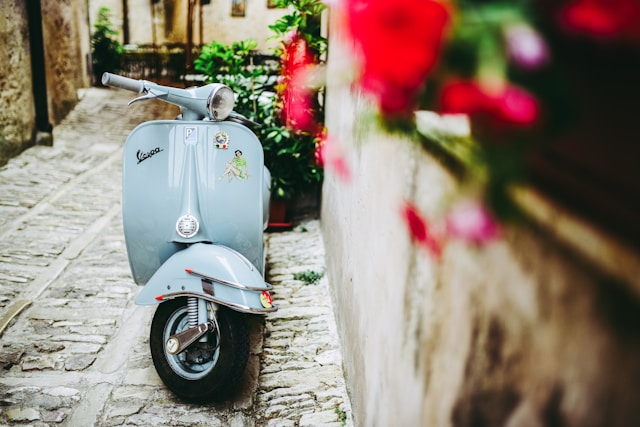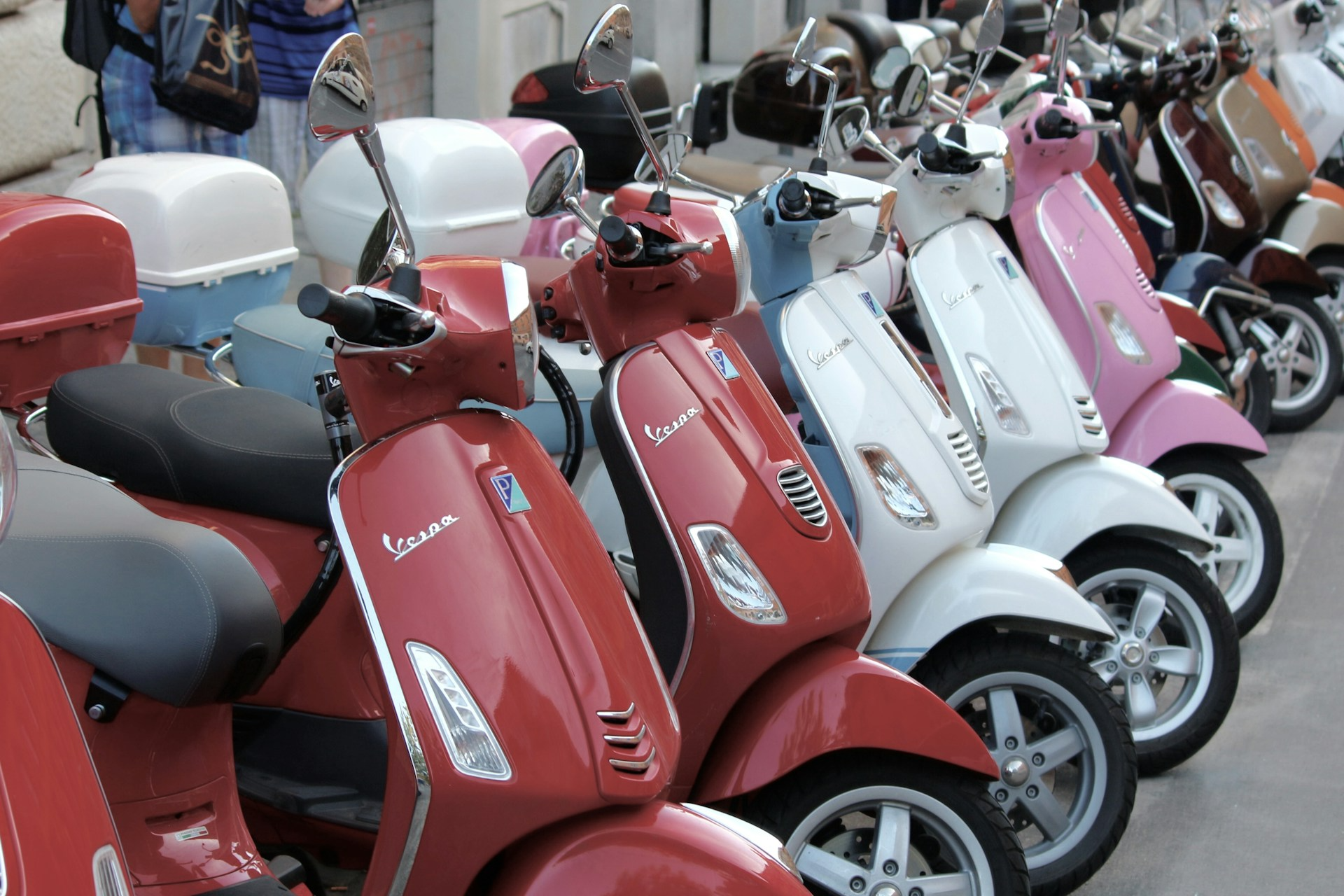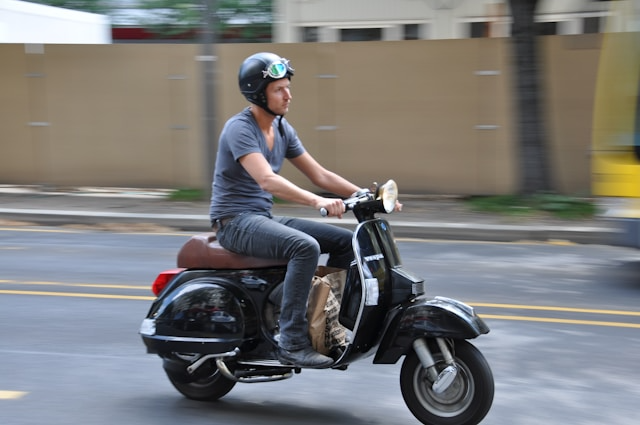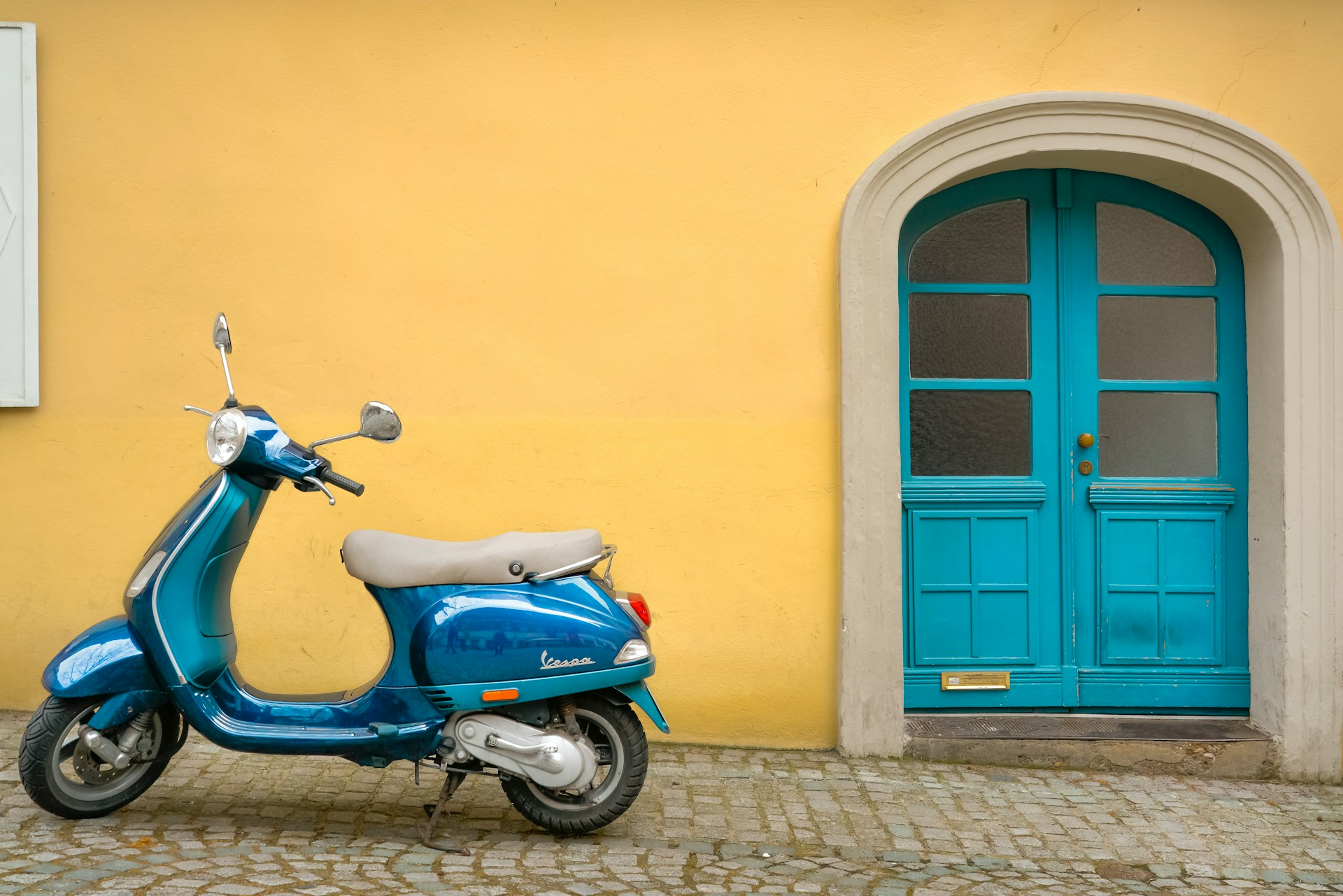Love the funky and vibrant look of Vespa scooters? We do it too! But is it affordable for everyone? Let’s talk about it here.
Vespa scooters are known for their distinctive design, high-quality construction, and premium brand status. Whether it’s in Hawaii or any other region, the cost of purchasing and maintaining a Vespa can be significantly higher due to various factors including import costs, local demand, and market positioning.
Vespa scooters are renowned for their stylish design, rich heritage, and high-quality build. Just imagine yourself riding a Vespa on the streets of Waikiki and people’s heads turning just to say “What a cool scooter that is!”.
However, many potential buyers wonder: Are Vespa scooters expensive? The answer largely depends on what you compare them to and how you define “expensive.”
In this article, we’ll break down the factors influencing Vespa’s price, compare them to other scooters, and analyze whether they are worth the investment.
Something About Vespa

Before we go deep into whether Vespas are expensive (and why), we’ll make a short detour into their history to learn what these things have about them.
Vespa scooters aren’t like the regular scooters you see zipping around today. They have a cool vintage look that instantly makes people want to get in for a ride.
Fun Fact: “Vespa” actually means “wasp” in Italian!
First introduced in 1946, Vespa scooters come from the famous Italian brand Piaggio, which has made all sorts of vehicles over the years. The original Vespa 98 design is still iconic worldwide.
Back in the 1960s, Vespas weren’t just stylish—they also played a role in giving women more freedom and independence. Not to mention, their stylish appearance made them a big hit in industrial design, also rethinking the concept of scooters after WWII.
Price Ranges Of Different Models
Whether you’re renting or planning to buy one, Vespa has a premium price tag. And, depending on the model, engine size, and features, Vespa scooters are priced differently. In 2025, general prices are as follows:
Entry-Level Models (Primavera & Sprint 50cc) – $4,000 – $4,500
Mid-Range Models (Primavera & Sprint 150cc, GTS Super 150cc) – $5,500 – $6,500
Premium Models (GTS 300, GTV 300, Limited Editions) – $7,000 – $8,500
To make things simple and more understandable check out the table below for a breakdown of models versus price:
| Model Name | Price | Operation Type | More Details |
| Vespa Primavera | $4,399-$8,299 | Gasoline & Electric Models Available |
|
| Sprint S | $4,599-$5,999 | Gasoline |
|
| GTS | $7,799 | Gasoline |
|
| GTS Super | $7,999-$8,499 | Gasoline |
|
| GTV | $8,499 | Gasoline |
|
| 947 Dragon | $13,499 | Gasoline |
|
Why Are Vespa Scooters So Expensive?

Now, let’s get to the big question—are Vespas expensive? And if so, why? Let’s find out! 2. Why Are Vespa Scooters Expensive?
Several factors contribute to Vespa’s higher price tag. We’ve mentioned some of the main factors below:
Iconic Brand & Heritage
Vespa has a long history as it has existed for over 60 years. It has established a strong and loyal following for its traditional Italian craftsmanship. It’s sort of like the Mercedes-Benz or BMW of scooters – sleek, well-made, full of pedigree.
What sets a Vespa apart (and makes it more expensive) from other scooters? Well, it’s all about the history of the brand, care, quality, and premium materials.
Vespas are all made with love so that they last for a long time with that classic, timeless aesthetic. When you ride a Vespa, it is not only a scooter that you ride, but it is also a history ride!
Premium Build Quality
Unlike most of the budget scooters which have cheap plastic body panels, the Vespas are constructed differently. As a result, they are equipped with high-quality steel and metal frames, which give them a much higher stability and strength.
Because Vespas are metal and not plastic, they not only survive longer but also radiate that sleek, timeless style that gives them a registration.
This unibody design is a big part of why they’re so sturdy—but it also makes production more expensive, which is why Vespas costs more than your average scooter.
Advanced Technology & Features
The Vespa models you see today are not only a matter of aesthetics but also of high-tech features that lead to smoother, safer, and fuel-saving driving experiences.
Newer models come with awesome upgrades like:
- ABS (Anti-lock Braking System) to prevent skidding in braking.
- Traction control keeps the wheels from slipping on tricky roads.
- Fuel Injection increases the efficiency and eco-friendliness of the engine.
- LED lighting displays brighter lights and a more modern instrument panel.
- Keyless Ignition (on select models) where you just press a button and go!
These are the kind of features you’d expect on a motorcycle, but not on most budget scooters. They definitely add to the price—but also to the experience!
Italian Manufacturing & Higher Production Costs
Vespa scooters are Italian-made, in a country famous for the quality and care with which it’s made. Unlike most other scooter manufacturers who make it in China or Taiwan to reduce costs, Vespa carries it to the Italian branding.
This is why the price of labor and materials is greater than the prices of brands that produce their scooters in lower-cost countries.
However, this also results in a premium quality scooter that has been meticulously built and with a focus on precision and durability.
Basically, what I feel is that owning a Vespa is not a matter of owning a scooter, it’s a matter of owning an Italian masterpiece of engineering and flair!
Market Demand & Resale Value
Not only are Vespa scooters cool but they hold their value quite well, too. Since they are of such high interest, the demand for these scooters remains strong, keeping their secondary market prices steady in the long term.
Studies indicate that Vespas retain approximately 72% of their original purchase price after 2 years of use. That’s a lot better than most other scooters, which usually lose value more rapidly.
However, although a Vespa will cost more to buy over the initial period, in the longer term it may be a clever investment in the case of future resale of the item.
So, you’re not just buying a scooter—you’re buying something that holds its worth!
How Do Vespas Compare to Other Scooters?

Vespa scooters come with a premium price tag. On average, they are 30-50% more expensive than the major brands Honda or Yamaha, and 2-3 times more expensive than the cheapest Chinese brands, Taotao or Jonway.
But, for that increased cost, it is top-of-the-line Italian quality, a heavy-duty steel frame, cutting-edge tech features, and good resale value.
Vespa might not be the most budget-friendly choice, but, you’re investing in looks, quality, and, longevity.
| Brand | Entry-Level 50cc Price | Mid-Range 150cc Price | Premium 300cc Price |
| Vespa | $4,000 | $5,500 | $7,000-$13,000 |
| Honda (Metropolitan, PCX150, Forza 300) | $2,600 | $4,000 | $6,200 |
| Yamaha (Zuma 50, XMAX 300) | $2,800 | $4,200 | $6,300 |
| Taotao / Chinese Brands | $1,000 | $2,500 | N/A
|
Are Vespa Scooters Worth the Price?
Confused about whether you should rent or buy a Vespa or not? Here are some of the pros and cons that I’ve noticed and would like to share with you.
Pros of Owning A Vespa
- Timeless Style: That classic Italian design never goes out of fashion. You’re riding in style no matter the year!
- Excellent Resale: Vespas retain their value for far more than budget scooters, which can make them an excellent purchase.
- Superior Ride Quality: Smooth performance, stable handling, and a quiet engine make every ride enjoyable.
- Durability: With proper maintenance, a Vespa can last 20+ years, outliving most other scooters!
Cons of Owning a Vespa
- Expensive Upfront Cost: Compared to other scooters, Vespas are pricey to buy.
- Costly Maintenance: OEM parts and servicing aren’t cheap, so upkeep can be more expensive.
- Limited Storage: Some models have less storage space than rivals, therefore adequate packing room is essential.
Still, if you’re after style, quality, and longevity, a Vespa is totally worth it!
Should You Buy a Vespa?

Vespa is a great choice for daily commutes around Waikiki but also for long trips. While these are highly priced compared to the other scooters, they provide a higher quality and longevity.
In terms of style, longevity, and brand image, a Vespa is a good option. But, if your concern is primarily price and a vehicle, a Honda or Yamaha might be a much better option.
Would you pay extra for the Vespa name, or would you opt for a more affordable alternative? Do give this a thought before you decide to invest in this brand.
Conclusion
Vespa seems to be expensive at first in terms of other brands. But, when you consider what you are receiving, the cost is justifiable.
You’re paying for decades of heritage, top-tier craftsmanship, advanced technology, and a scooter that holds its value over time. It’s not just about getting from point A to point — it’s about cruising in style, having a piece of history, and just driving and having a good time.
For many riders, a Vespa is not a scooter, but an experience!
Frequently Asked Questions
Why are Vespa scooters more expensive than other brands?
Vespa scooters have a reputation for a high quality of build, Italian style, strong metal frame, and brand image. As opposed to most of the competitors who use plastic frames, Vespas has a metal build frame, which leads to durability and vibration reduction.
How does Vespa’s cost compare to maintaining a car?
Owning and maintaining a Vespa is considerably cheaper than owning and maintaining a car. It has high fuel economy (over 80–100 MPG), low insurance premiums, and lower maintenance costs, making it financially viable for city trips.
Are there additional costs beyond the purchase price?
Yes, registration, insurance, maintenance, and accessories (helmets, locks, etc) should be considered. But, these are usually less than the cost of car ownership.

